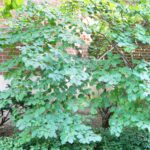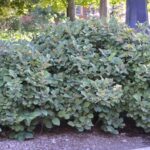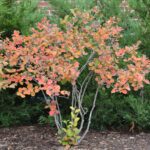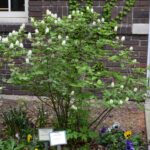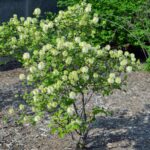Flower Notes:
Red (Showy crimson stamens appear in March before leaves in the spring)
Foliage Notes:
Purple (Leaves emerge reddish-purple in the spring); Green (Witch hazel-like leaves are quite a lustrous dark green in the summer); Multi-Colored (Brilliant yellow to orange to scarlet in the fall)
Soil Notes:
Widely adapted to different soils
Diagnostic Characteristics:
Leaves alternate, simple, 2.5-5" long and half as wide, oval to obovate-oblong, conspicuous stipules, coarsely crenate-dentate above the middle, undulate, (shape resembles Hamamelis and Fothergilla). Buds are stalked. Stems pubescent only when young.
